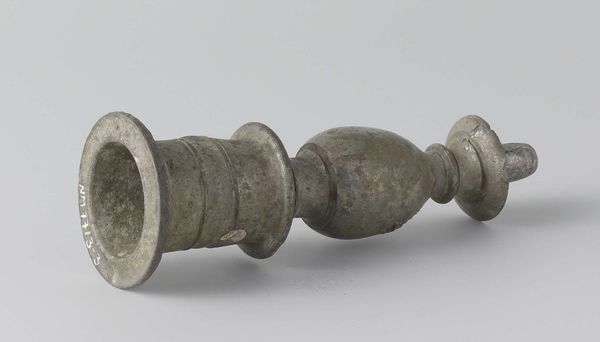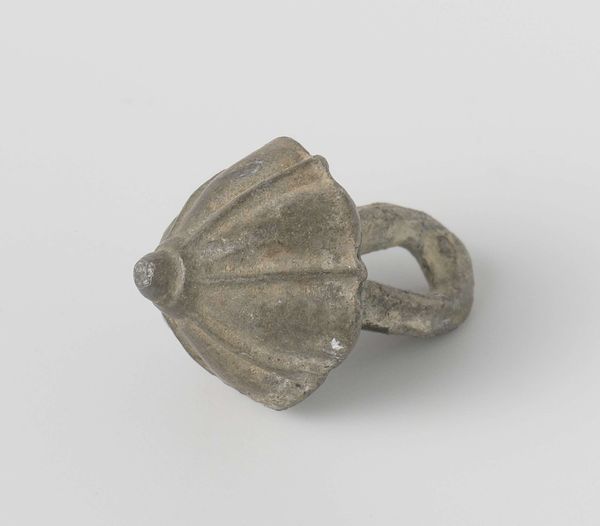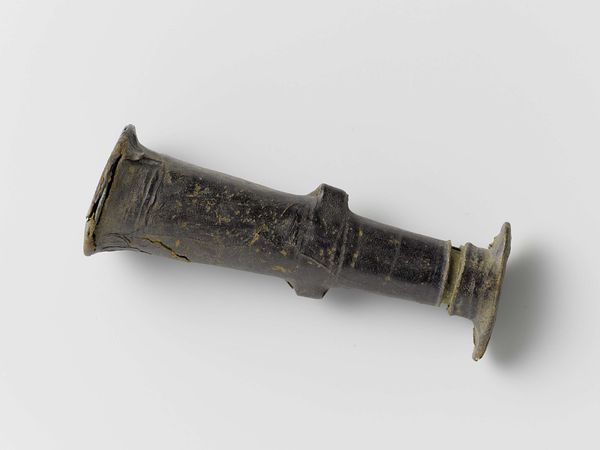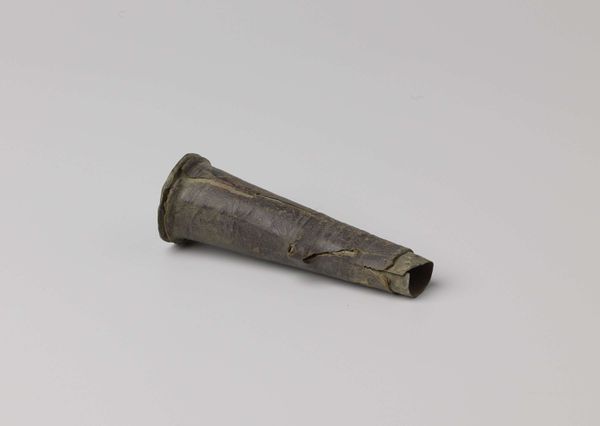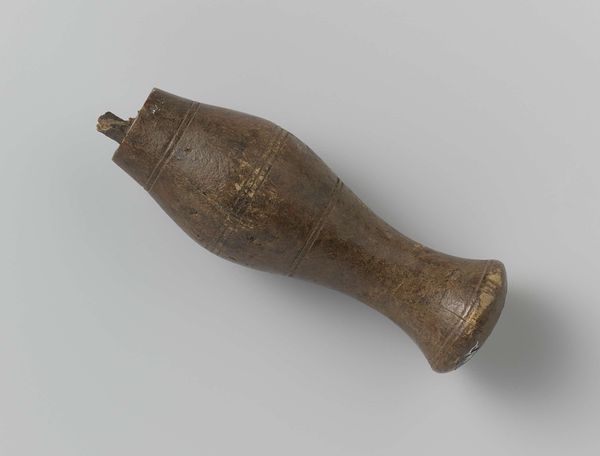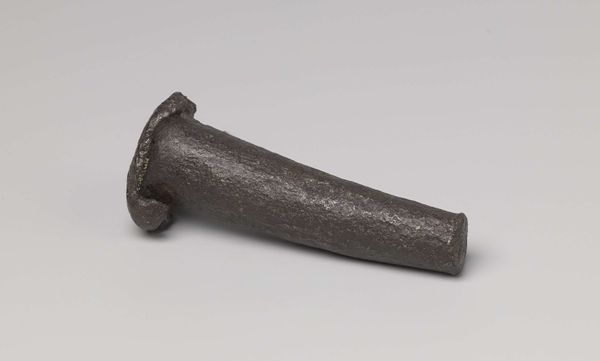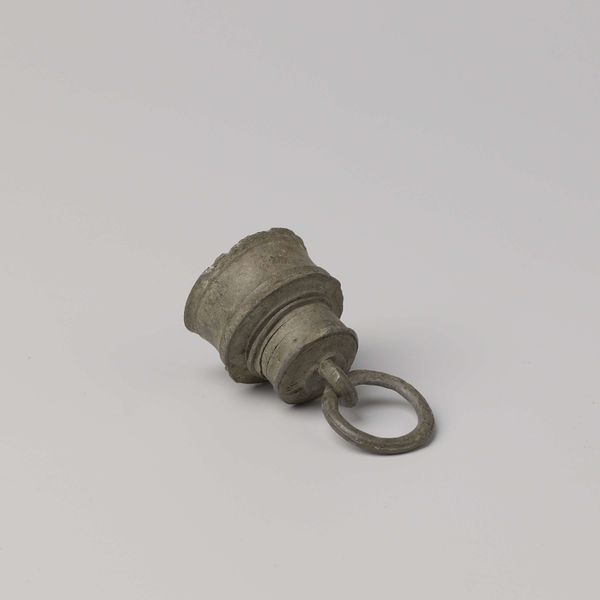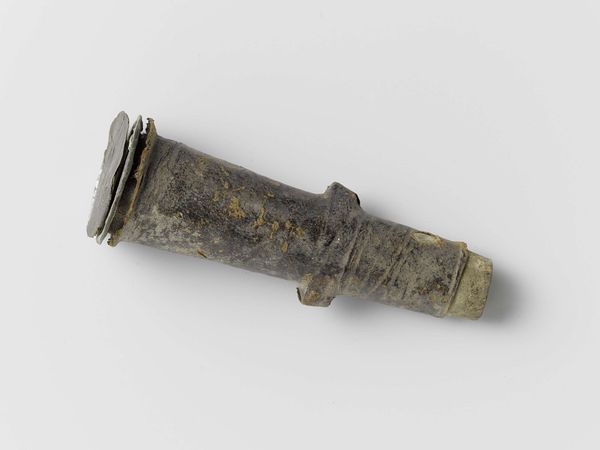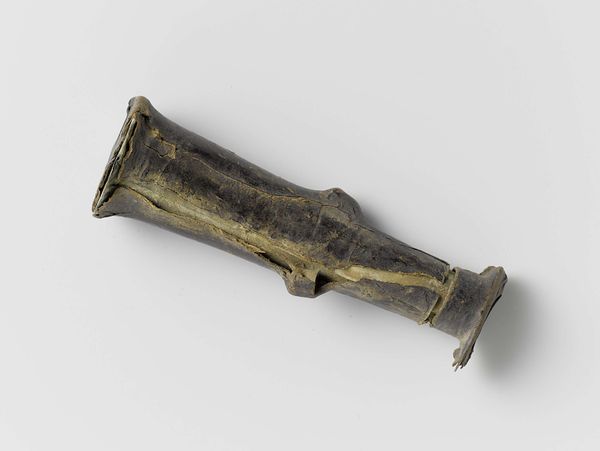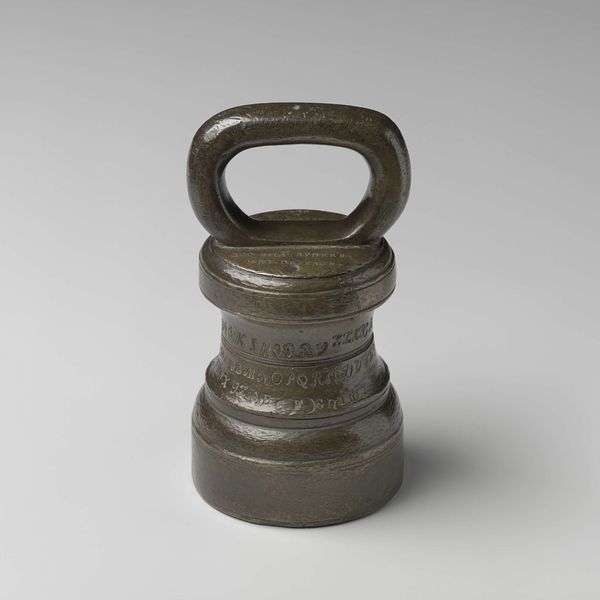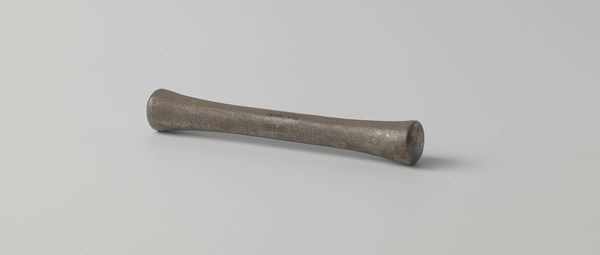
metal, sculpture
#
baroque
#
dutch-golden-age
#
metal
#
form
#
sculpture
Dimensions: length 13.4 cm, diameter 4 cm
Copyright: Rijks Museum: Open Domain
Curator: This is a fragment of a tin candlestick, specifically the upper part, dating back to around 1590-1596. It's currently housed in the Rijksmuseum, and made of metal, though the maker remains anonymous. Editor: It's quite humble, really. Not what I imagine when I think of the Dutch Golden Age. The missing bottom is also a little distracting, like seeing a ruined building and having no way of knowing what the whole thing was, or if there’s significance in its decay. How should we think about an object like this? Curator: Precisely. Consider the properties of tin. It's relatively soft, easy to cast, and readily available – quite unlike gold or silver. Its everyday applications offer insight, because this object reflects broader consumption patterns of the time, the way that it was perhaps mass-produced with low labor cost to make lighting more accessible across different social strata. How might the fragment’s damage factor into this equation? Editor: Maybe its current state emphasizes that this luxury wasn't made to last, and meant for immediate practical value, reflecting a specific time, the here and now, rather than legacy? Does that challenge the notion of art and craft, since it implies they are distinct, hierarchical roles? Curator: Exactly! It destabilizes our pre-conceived notions. By thinking about production and consumption, we're really pushing at the boundaries of ‘high’ art versus mere functional object, while underscoring class distinctions. Consider how the Baroque, even in its Dutch iteration, often celebrated wealth. But here, the materials tell a different story, even challenging those aristocratic pretentions through labor and accessibility. Editor: So the object's existence is more about the culture, and social systems that it reveals rather than the beautiful form? Curator: Absolutely. It's not merely about aesthetics; it’s about unearthing the relationship between labor, material access, and what that says about value in Dutch society during this period. What have you learned about that relationship through our conversation today? Editor: That beauty is sometimes in the broken, because it reminds us of what something once did in practice, for many people, even if ordinary, in the broader scope of the past. Thank you!
Comments
No comments
Be the first to comment and join the conversation on the ultimate creative platform.
